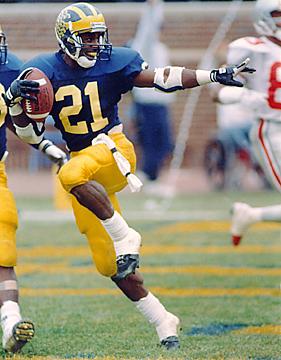WAR Western!
http://www.freep.com/apps/pbcs.dll/arti ... 1108120457
INDIANAPOLIS -- Less than 24 hours after president Mark Emmert called for immediate changes in college sports, the NCAA's board of directors approved a proposal Thursday that would include postseason bans if teams fail to meet higher academic standards.

If such standards were in place now, Michigan would be ineligible for a bowl after this season. Central Michigan would be ineligible for the men's basketball tournament.
To measure success in the classroom, the NCAA devised in the past decade the Academic Progress Rate. Each athlete earns one point per semester by staying academically eligible and a second point for staying enrolled. Teams need a single-year APR of 925 (out of 1,000) -- which the NCAA puts at roughly a 60% graduation rate -- to stay clear of penalties, such as a loss of scholarships, and a four-year rolling average of 900 to avoid more severe penalties, such as a postseason ban.
The NCAA board voted to do away with single-year APR scores and only use the four-year rolling average to determine postseason eligibility. But the board voted to increase the four-year mark from 900 to 930.
In May, the NCAA announced its four-year APR averages from 2006-07 through 2009-10. Only three Division I teams in the state failed to meet 930 -- U-M's football team at 928, CMU's men's basketball team at 923 and Detroit Mercy's men's lacrosse team at 880.
The Wolverines' number was so low because in Rich Rodriguez's first full year, after a series of transfers and departures, the APR was 897. The number rebounded in 2009-10 -- his second full year -- to 946.
Michigan State's four-year football average was 938, ninth in the Big Ten. U-M's score was last. (Nebraska, if included, would have been sixth at 958.)
New U-M coach Brady Hoke, in his lone full academic year at San Diego State, scored 944.
U-M, CMU and UDM, however, will have plenty of time to raise their averages. NCAA leaders will consider in October when the new rules should take effect, and Walt Harrison, president of the University of Hartford and chairman of the committee on academic performance, said he expected the penalty structure to be phased in during a three- to five-year period. Harrison earned his master's from U-M in 1969 and later worked for the school.
Any team with a four-year average below 930 would be ineligible even if its score was improving. Current rules allow teams to be granted waivers if scores improve significantly.
"That's one of the things we'll have to study between now and October, but the direction I'm getting from the board is not too much leverage there," said Harrison, whose committee proposed increasing the cut mark. "If there is any appeal at all, it is going to be tightly defined and there may not be any."
The overall APR for all Division I teams was 970. The football average was 946, the men's basketball average 945.
Emmert and South Florida president Judy Genshaft, the board's chairwoman, have even bigger plans for down the road. They said Wednesday and reiterated Thursday the need for stronger sanctions for NCAA rule-breakers, a major edit of the massive 439-page rulebook and tougher academic standards for incoming freshmen and junior-college transfers. Other changes could include allowing schools to cover the full cost of attendance rather than just the cost of tuition, room and board, fees and books.
Emmert hopes all of that can be approved within the next 12 months -- a virtual whirlwind compared with the traditionally deliberative NCAA legislative process that can take years.



